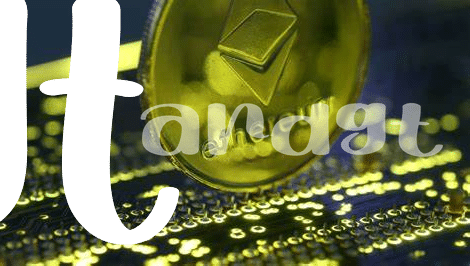🎭 the Tale of Two Ethereums: a Brief History

Imagine two close siblings taking different paths in life; this is the story of Ethereum and Ethereum Classic. Born from the same initial code, their life stories diverged dramatically in 2016 after a big family fallout—a hack. Picture a digital vault filled with digital money, and someone finds a way to sneak in and grab a big chunk of it. This caused a huge stir in the Ethereum family. Some folks believed the best way to fix this was to turn back time, creating a new path where the theft never happened, leading to the birth of what we now call Ethereum. Others believed in the principle of “what’s done is done” and chose to continue on the original path, thus Ethereum Classic was born. This split is akin to a fork in the road, shaping their futures distinctly. Below is a simple table to give you a snapshot of this pivotal moment:
| Aspect | Ethereum (ETH) | Ethereum Classic (ETC) |
|---|---|---|
| 🚀 Launch | Post-split, 2016 | Pre-split, original blockchain |
| 🎨 Philosophy | Intervention to correct significant issues | Immutability, or unchanged history |
| 🛠️ Response to Theft | Reversed the theft transactions | Maintained the ledger as is |
This divergence has led each Ethereum to adopt different core values and visions, shaping their communities, technologies, and futures in distinct ways.
🛠️ Technical Twins? Comparing Their Technologies
Imagine you have two siblings who share a lot of traits because they come from the same family, but as they grow, their paths diverge based on their experiences and the decisions they make. That’s a bit like Ethereum (ETH) and Ethereum Classic (ETC). Initially, they were one and the same, sharing the same blockchain technology that allowed people to make agreements or contracts in the digital world without the need for a middleman. However, after a significant digital break-in where a lot of digital money was stolen, the community decided to take a different path to undo this theft, leading to the birth of two separate Ethereums. Ethereum chose to update its ledger to erase the effects of the theft, which was essentially like turning back time to before the incident happened. On the other side, Ethereum Classic decided to stick to the original record, accepting the theft as part of its history, upholding the principle that the ledger should remain unaltered regardless of the circumstances. This decision not only marked the beginning of their philosophical divergence but also started them down paths that involved different technological developments and visions for the future. While both continue to use a similar foundational technology, where computers around the world work together to secure the ledger and process transactions, Ethereum has shifted towards a new system that uses less energy. Ethereum Classic, however, has chosen to stick to the original method, emphasizing a slightly different set of values and priorities. Both are moving forward, just in different directions, highlighting the beauty of choice and diversity in the vast world of digital currencies. In this realm of constant evolution, understanding the nuances of such technologies can be as fascinating as watching the journey of those siblings, each growing into their unique selves yet sharing a common root. For an in-depth look into another intriguing aspect of the digital currency world, consider diving into the future of Litecoin’s price trends and projections here, which might offer insightful parallels or divergences from our tale of two Ethereums.
💰 Following the Money: Ethereum Vs. Ethereum Classic

When we peek into the world of digital currency, the tales of Ethereum and Ethereum Classic shine a spotlight on the intriguing dynamics of value and growth. Picture this: two close relatives, sharing a last name, but charting different paths in the financial wilderness. Ethereum, the younger of the two, quickly became the darling of developers and investors alike, its innovative technology paving the way for applications far beyond simple transactions. Its value soared, capturing the attention of big names and small investors. On the other side, Ethereum Classic has held onto tradition, appealing to those who value the original vision of an unaltered digital ledger. Despite its more modest market performance, it attracts a dedicated group, convinced of its potential to challenge Ethereum’s dominance. This juxtaposition sets a financial stage where the past and future collide, offering a fascinating glimpse into how digital currencies evolve and compete. As both continue to grow, albeit at different paces, the financial narratives they weave are as much about community trust and technological potential as they are about the numbers on a chart. 📈💼🔍
🚀 Where We’re Going: Future Roadmaps Explored

Ethereum and Ethereum Classic are like two siblings with different dreams for their future. Ethereum is always looking ahead, eager to embrace new changes that make it faster and more accessible to everyone. It’s planning to become even more energy-efficient and to improve how transactions are done, making them quicker and cheaper for everyone. This is like making sure everyone can send letters and postcards from anywhere in the world, without worrying about the cost or how long it will take to arrive. On the other hand, Ethereum Classic focuses on being stable and secure, like a trusty old lock. It values keeping things as they are, reliable and unchanging, ensuring that all deals made are as they were intended from the start.
As we ponder the futures of both platforms, it’s fascinating to see how they each prioritize different elements of their technology and community. Ethereum is all about innovating and moving forward, whereas Ethereum Classic holds onto the original vision, focusing on security and reliability. This divergence in their roadmaps highlights the different philosophies driving each project. For those curious about how these developments might influence the world of digital currencies, including Ethereum’s influence on ltc price, staying informed on these changes is key. Whether you’re an investor or simply someone interested in the future of blockchain technology, there’s no denying the exciting times ahead for both Ethereum and Ethereum Classic.
🏦 Community and Support: Understanding the Ecosystems
Imagine a bustling city full of passionate folks, all gathered around their favorite hangout spots, talking about how to make their neighborhood even better. That’s a bit what it’s like diving into the communities behind Ethereum and Ethereum Classic. Both have their unique vibes, with Ethereum boasting a larger, more diverse group. It’s like the big city where new ideas and big projects are always on the move. From developers to investors, the Ethereum crowd is all about innovation and pushing the boundaries of what’s possible with blockchain technology.
On the flip side, Ethereum Classic feels more like a tight-knit community, where preserving the original values of blockchain is key. It’s like a quaint town where everyone knows each other and is united by a common goal – to keep the original Ethereum vision alive. Despite being smaller, the dedication in the Ethereum Classic community is palpable, with a strong emphasis on security and stability. Here’s a quick snapshot:
| Aspect | Ethereum (ETH) | Ethereum Classic (ETC) |
|---|---|---|
| Community Size | Larger, diverse | Smaller, tight-knit |
| Focus | Innovation, new projects | Preserving original blockchain principles |
| Support | Extensive developer tools, large ecosystem | Focused on security, loyal to original coding |
Both groups might seem worlds apart, but at their core, they share a love for blockchain and its potential. Whether you’re drawn to the bustling streets of Ethereum or the close-knit community of Ethereum Classic, each has something special to offer to those who are willing to dive in.
🛡️ Security Smackdown: Addressing Past Vulnerabilities

Both Ethereum and Ethereum Classic have had their share of adventures and challenges, especially when it comes to security. Imagine two siblings walking down different paths, but initially, they shared the same vulnerabilities, like leaving their home’s back door unlocked. Ethereum decided to change the locks and add new security systems after a significant break-in, known as the DAO hack, where a lot of digital money was stolen. Following this event, Ethereum Classic stuck with the old locks, believing in the principle of immutability – that transactions, once made, should not be altered. This has sparked an ongoing debate on security philosophy between the two. On the Ethereum side, they’ve introduced new protocols and updates like Casper, aiming to enhance security and reduce vulnerabilities. Ethereum Classic, meanwhile, has focused on maintaining its original code but isn’t turning a blind eye to security needs and has made its tweaks and adjustments over time. Both communities are vigilant, constantly on the lookout for potential threats and working on strengthening their defenses. Staying informed about the current state of the crypto market, including the bitcoin price, is essential for understanding the broader implications of these security measures. As they progress, they learn from each other, emphasizing the importance of security in the ever-evolving digital world.
